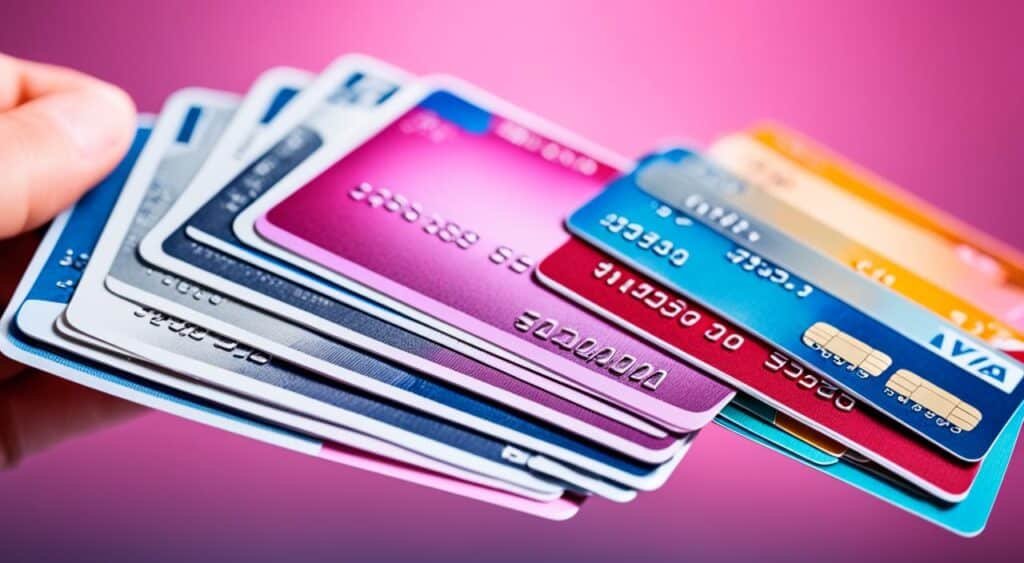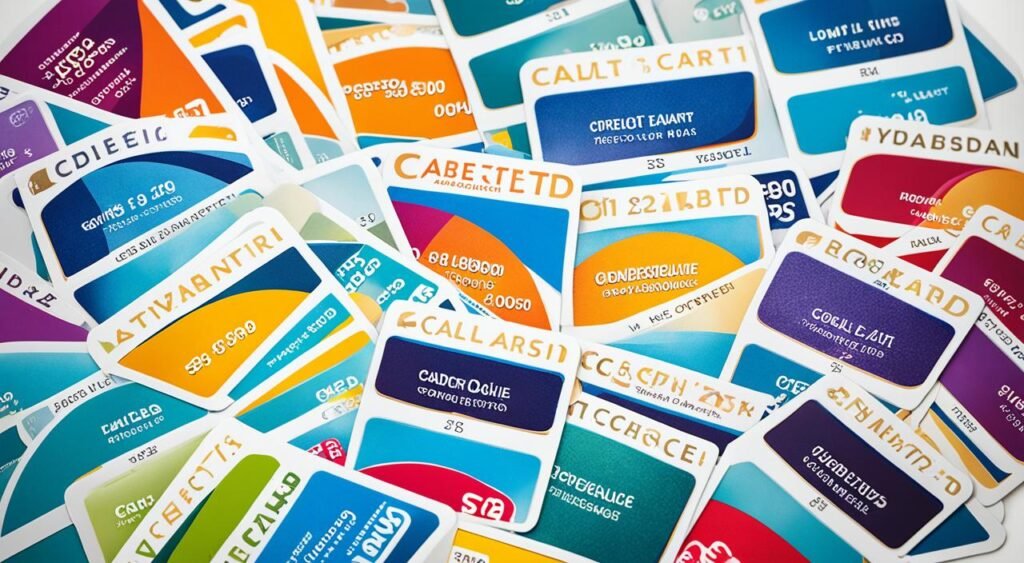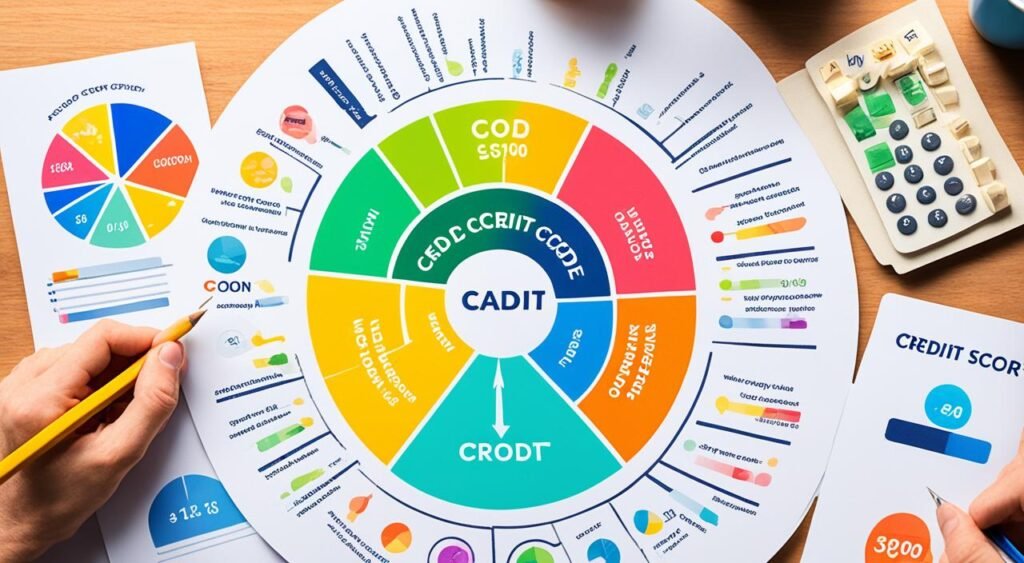High Rates? Find Low Interest Credit Cards!
High Rates? Find Low Interest Credit Cards! :Are you worried about the high rates on your credit cards? It could be time to check out low-interest credit cards. These cards can save you money on interest, make big buys easier, and boost your credit. With options like introductory APR and ongoing low rates, there’s something for everyone.
A FICO score or credit score shows how trustworthy you are with credit. It helps decide what credit goes to you. Yet, having a good score doesn’t mean you’ll get every card. Finding the right card means looking at all choices and their details.
Low-interest cards with introductory APR deals can help in your credit journey. But, they have risks. Pick cards with long intro APR periods to manage interest well. Always check the details of the offer to know what you’re getting.
If you’re not using an intro 0% APR, the interest on your balance can get high. The average credit card rate is 15.13%. For cards with interest, it’s even higher at 16.65%.
Key Takeaways
- Low-interest cards can cut interest costs and debt management easier.
- Intro APR deals are handy, but understanding their terms is key.
- Your credit score matters for getting low-interest cards, but it’s not everything.
- High APRs on a balance mean paying a lot in interest. So, look into low-interest cards.
- Explore the perks of low-interest cards, like rewards and low annual fees, to fit your needs.
Understanding Credit Ranges
The FICO score is crucial when it comes to measuring creditworthiness. It’s a three-digit number that shows how likely you are to pay back credit on time. This number, which goes from 300 to 850, helps lenders quickly understand your credit risk.
For example, if you have a high FICO score, like 800 or more, lenders see you as a safe bet. You might get low-interest rates on loans or qualify for top-notch credit cards. However, a low score might mean paying more in interest or getting fewer credit options.
FICO Score and Creditworthiness
Having a higher FICO score often leads to better financial opportunities. You might easily get loans or credit cards with nice perks. But, if your score is low, it’s tougher. You may have to settle for higher interest rates or fewer loan choices.
It’s important to know your credit score. By understanding your score and what affects it, you can aim for the best credit deals. This way, you can save money and get the financial products you want.
Types of Credit Products
Your spot in the credit range impacts what financial products you can get. People with great scores generally have more choices. That’s things like credit cards with purchase intro APR offers and amazing rewards programs. If your score is good but not great, you can still find solid options too.
Don’t worry if your credit score isn’t perfect though. There are credit products made for people in your shoes. With time and care, you can work your way to a better score. Then, even more financial doors will open for you.
Top Low Interest Credit Cards for 2024
In 2024, you have great options for low interest credit cards. The Wells Fargo Reflect® Card, Discover it® Cash Back, and Chase Freedom Flex℠ are some top picks. They let you save on interest and maybe earn some rewards too.
Wells Fargo Reflect® Card
The Wells Fargo Reflect® Card has a standout feature: 0% intro APR for 21 months on purchases and balance transfers. After, the APR could be 18.24% – 29.99%. This card is also fee-free and offers cell phone protection. You also get to join the My Wells Fargo Deals program.
Discover it® Cash Back
The Discover it® Cash Back card gives a 0% intro APR for 15 months on purchases and transfers. Then, its APR varies from 19.24% to 29.24%. You can earn 5% back in certain categories (up to $1,500 each quarter) and 1% back on everything else. Plus, at the end of the year, Discover matches the cash back you’ve earned.
Chase Freedom Flex℠
The Chase Freedom Flex℠ offers a $200 cash reward when you spend $500 in the first 3 months. It has 5% back in bonus categories (up to $1,500 per quarter when you activate the offer) and on Chase Ultimate Rewards® travel. Plus, you get 3% back at restaurants and drugstores, and 1% back everywhere else.
Factors to Consider When Choosing Low Interest Credit Cards

Choosing a low-interest credit card means looking at a few important things. Make sure the card offers what works best for your money needs. Think about the time for the intro APR, what APR comes after, and the credit score needed.
Length of Introductory APR Period
Look for cards that give you plenty of time to pay off without interest. A long introductory APR period is key in your credit journey. Just be careful not to lose the 0% APR if you pay late.
Ongoing APR After Intro Period
Don’t forget about the APR that kicks in after the intro period. This ongoing rate affects how much you pay in interest over time. Understand the terms to know what to expect from the ongoing APR.
Credit Score Requirements
Most cards with a 0% APR need a good to excellent credit score. Knowing the credit score needed helps you see if you can get the card. It’s good to check this before applying.
| Factor | Consideration |
|---|---|
| Introductory APR Period | Focus on cards with a long enough period to effectively manage interest charges |
| Ongoing APR After Intro | Review the long-term interest rate that will apply once the intro offer expires |
| Credit Score Requirements | Understand the credit score needed for approval on 0% APR cards |
Benefits of Low Interest Credit Cards

Low-interest credit cards are a great way to handle your money. They let you avoid high interest charges when you keep a balance. This is one big plus.
Avoiding High Interest Charges
The APR in the US averages at 15.13%. If a card’s APR is 17% and you owe $1,000, paying only the minimum could take 90 months. You’d end up paying $794 in interest. Low-interest cards help you steer clear of such high costs.
Managing Debt and Large Purchases
These cards are not just good for cutting down interest. They also help with debt and paying for big buys. Many have 0% intro APRs for a time on new purchases or moving a debt. This is perfect for those with good or excellent credit who want to pay off debt or afford big projects like a remodel or a car.
By using low-interest credit cards wisely, you can get a better grip on your finances. This means less worry about big interest costs and a chance to pay off debt sooner. They are a smart move for people with debts or big spenders, letting them tackle the main debt without high interest distractions.
Low Interest Credit Cards

Choosing between no-interest and rewards credit cards can be tough. If you tend to keep a balance, it’s often better to pay less interest. This means focusing on your balance more than collecting rewards.
No Rewards vs. Rewards Cards
Many low-interest credit cards do have rewards, but that’s not the main thing to look at. It’s all about finding the lowest interest rates. Cards with 0% APR to start and low regular APR afterward are best. Remember, if you keep a balance, saving on interest beats earning rewards.
Annual Fees and Other Costs
Don’t forget about annual fees and balance transfer fees with low-interest cards. Some cards are free to carry, while others charge an annual fee. If you plan to move a balance, check the transfer fees. Also, be aware of foreign transaction fees for using the card abroad.
| Feature | No Rewards Card | Rewards Card |
|---|---|---|
| Interest Rates | Typically lower | May be slightly higher |
| Rewards Program | None | Offers points, cash back, or other rewards |
| Annual Fees | Often no annual fee | May have an annual fee |
| Balance Transfer Fees | May be lower or waived | May be higher |
| Foreign Transaction Fees | Typically lower or none | May be higher |
Look closely at interest rates, fees, and costs when picking a low-interest card. Think about how it fits your financial plan and goals. This way, you’ll make the best choice for your money.
Strategies for Using Low Interest Credit Cards

Smart shoppers use low-interest credit cards in clever ways. One way is through balance transfers. They move debt from high-interest cards to those with a 0% intro APR. This reduces the interest they pay.
Balance Transfers
Choosing the right card for a balance transfer is key. Look for cards with long 0% intro APR periods, usually 12 to 21 months. This time lets you pay off your debt before regular ongoing APR starts. But, watch out for transfer fees that could reduce your savings.
Financing Major Expenses
Need to pay for a big expense, like home improvements or medical bills? A card with a 0% intro APR on purchases can be handy. It lets you pay off the cost over time without extra interest charges. Remember, you still need a plan to clear your debt before the intro period ends.
Building Credit History
Want to improve your credit score? Low-interest credit cards help. Paying on time and keeping your spending low shows good credit management. With time, your credit score might rise. This can lead to better credit opportunities in the future.
Comparing Low Interest Credit Card Offers

When looking at low-interest credit card choices, focus on several important points. These include the 0% intro APR, the ongoing APR after it ends, annual fees, and any rewards, balance transfer fees, and foreign transaction fees.
The 0% intro APR period matters a lot. A longer period helps to reduce your debt without adding on interest. But keep in mind the ongoing APR once the intro period ends. This will affect how much interest you pay in the long run.
Some low-interest cards come with rewards. Others may not. Consider if rewards are worth more than any annual fees. If you’re managing debt, a low ongoing APR might be better than getting rewards.
Don’t forget about balance transfer fees and foreign transaction fees. These costs can make a big difference in your savings. So, include them when making your choice.
It’s also important to check the credit score requirements. Cards for good or excellent credit may offer better deals. Make sure your credit matches the card to improve your chances of getting approved.
| Card | 0% Intro APR | Ongoing APR | Annual Fee | Rewards | Balance Transfer Fee | Foreign Transaction Fee | Credit Score Requirements |
|---|---|---|---|---|---|---|---|
| Wells Fargo Reflect® Card | 0% for 21 months | 18.24% – 29.99% variable | $0 | None | 3% or $5, whichever is greater | 3% | Good to Excellent Credit |
| Discover it® Cash Back | 0% for 15 months | 19.24% – 29.24% variable | $0 | 5% cash back on rotating categories, 1% on other purchases | 3% | $0 | Good to Excellent Credit |
| Chase Freedom Flex℠ | 0% for 15 months | 19.24% – 27.99% variable | $0 | 5% cash back on rotating categories, 1% on other purchases | 3% or $5, whichever is greater | 3% | Good to Excellent Credit |
Tips for Maintaining a Good Credit Score

It’s key to have a good credit score if you want low-interest credit cards. By working on factors that affect your score, you make sure you get good credit terms and rates. We’ll look at the top three things to focus on:
Payment History
How well you pay your bills matters a lot for your credit score. Always pay on time for your credit cards and other bills. Missing a payment can hurt your score. Use automatic payments or set up reminders to stay on top of due dates.
Credit Utilization
The credit utilization ratio is also critical for your credit score. Try to keep your credit card debt low, preferably under 30% of your credit limit. This shows you handle your debt well, and you’ll save money by avoiding high interest charges.
Credit Mix
Having different kinds of credit, like credit cards and loans, is good for your score. It shows you can manage various types of credit. This can boost your credit score.
| Credit Score Factor | Impact on Credit Score |
|---|---|
| Payment History | 35% |
| Credit Utilization | 30% |
| Credit Mix | 10% |
| Length of Credit History | 15% |
| New Credit | 10% |
Focusing on these areas can help keep your credit score high. You’ll qualify for the best options in credit cards and other financing.
Also read: What Is Credit And How Is It Used In Financial Transactions?
Conclusion
Credit cards with low-interest rates are great for managing debt and big buys. They help you avoid high interest costs, juggle debt smarter, and find more financial wiggle room. But, it’s smart to think about how long the low rate period lasts, what the rate will be later, and what credit score you need. This helps you pick the best card for you.
To really benefit from these cards, it’s important to keep your credit record strong. This means using credit wisely, paying your bills on time, and understanding how these credit cards work. Knowing about things like low interest credit cards and intro APR can help you get better with money. You can use these cards for large purchases, earn rewards, or move your debt around to save money.
Having a low-interest credit card on your side is great for your credit history, how you use credit, and keeping up with payments. It gives you the power to keep a good mix of credit and reach your money goals. By making informed choices, you can use these cards wisely. This can help lower your debt and cut down on costs like annual fees of owning a card.
FAQs
Q: What is an intro apr on a credit card?
A: An intro apr, or introductory annual percentage rate, is a promotional interest rate offered by credit card issuers for a limited period of time, usually to attract new customers or encourage balance transfers.
Q: How can I find the best low-interest credit cards?
A: To find the best low-interest credit cards, you can compare offers from different card issuers, look for cards with a low variable APR, consider intro apr offers, and check for any rewards or benefits that align with your needs.
Q: What is the difference between a purchase apr and a balance transfer apr?
A: A purchase apr is the interest rate applied to purchases made on a credit card, while a balance transfer apr is the interest rate applied to balances transferred from one card to another. These rates may vary and can impact your overall cost of using the card.
Q: How can I lower the interest rate on my credit card?
A: You can lower the interest rate on your credit card by maintaining a good credit score, negotiating with your card issuer for a lower rate, transferring balances to a card with a lower apr, or paying off your balance in full each month to avoid accruing interest.
Q: What is a balance transfer fee on a credit card?
A: A balance transfer fee is a one-time fee charged by credit card issuers when you transfer a balance from one card to another. This fee is typically a percentage of the amount transferred and should be considered when deciding to transfer balances.
Q: Are there credit cards with intro apr on balance transfers?
A: Yes, some credit cards offer intro apr on balance transfers as a promotional incentive. This means you can transfer existing balances to the new card and pay little to no interest on those balances for a specified period of time.
Q: What should I consider when looking for a credit card with a low interest rate?
A: When looking for a credit card with a low interest rate, consider factors such as the regular apr, intro apr period, balance transfer fees, rewards offered, and whether the card aligns with your financial goals and spending habits.
Source Links
- https://www.bankrate.com/credit-cards/zero-interest/best-low-interest-cards/
- https://www.creditkarma.com/credit-cards/low-interest
- https://www.cnbc.com/select/best-low-interest-credit-cards/
